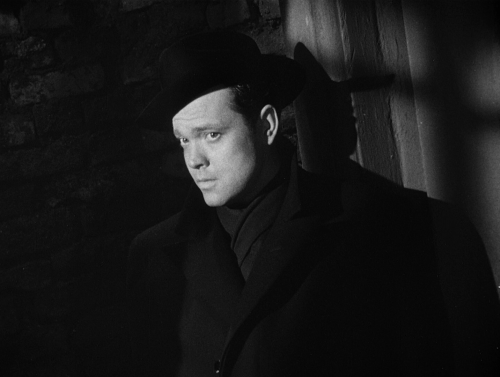2023 Tarkovsky Prize Honorable Mention: Ivona Sutilovic
Suspense in Reed’s THE THIRD MAN
by Ivona Sutilovic
Fear and suspense are the key methods utilized in film making that leaves the audience on the edge of their seats not knowing what’s to come next. This is the very essence, and beauty, of Carol Reed’s The Third Man. Through chiaroscuro and deep historical perspectives, Reed evokes horror and uncertainty as a main motif surrounding the deaths that occur throughout the film.
The Third Man takes place in Vienna when an American pulp western writer, Holly Martins, accepts a job offer from Henry Lime, an old friend, but soon finds himself investigating Lime’s death. As Martins gets deeper in the investigation of the death under unusual circumstances, he is in search of the third man who has been involved with Lime’s death. What the audience, and Martins, begin to discover is Lime’s involvement in the black market—robbing, deluding, and reselling penicillin to children in the military army who were sick, consequentially killing innocent children.
Reed paved the way of using lighting in this film noir to emphasize the horrendous actions and destiny of the characters. Chiaroscuro, a type of lighting used famously by Rembrant, highlights the contrast of light and dark. Reed evokes emotions of creepiness and heavy subjects using the darkness, and in contrast uses a spotlight for the character’s faces. This technique was widely used in later Hollywood films because of The Third Man. Reed also uses elongated shadows to evoke the feeling of mystery and uneasiness in the characters, and the audience. In an iconic clip, Martins is walking the streets of Vienna at night and the light from street lamps nearby casts a shadow on the buildings—the shadows, however, are enormous, and are exaggerated to emphasize the feeling of suspicion and creepiness when he is walking in the dark. His shadow, being even longer than the street lamps, shows how great and important his character is, how his shadow takes over the streets of Vienna—one of the most iconic scenes in the film.
During the chase in the sewer, similar lighting techniques are used. It’s incredibly dark and you can only see shadows and flashlights, but that specific gray lighting shows the musty feeling of the air. The audience is literally being kept in the dark when this chase is happening since Martins is trying to get Harry, who is undercover, to surrender. But when British sergeant Paine is caught off guard and in the open, Harry shoots him. The audience is just as bewildered and have not been expecting this death. The shadowing evokes suspense and thrill that deepen the emotions of creepiness and surprise.
The historical significance of this movie helps further understand the characters. After WWII, Vienna was torn into four sections and became exhausted of its resources. The people didn’t have any money, and were incredibly desperate. This shows the motive of Lime’s atrocities in the military hospital. To Lime, diluting and selling wrongful medication was the best and fastest way to make money, even though it had immense consequences—killing children and families. On top of the chilling use of lighting, this movie covers in depth the post-war effect on people. I was born and raised in the post-war Balkans and can relate to witnessing the post-war depression of the people. The atrocities have caused a physical and mental strain on people, and this movie shows this suffering through Lime and various background character’s stories such as Anne’s. Reed almost makes the audience feel bad for Lime at times because of this suffering post-war, even though he is a murderer and a criminal. The contrast and the tension that develops in the characters as Martins begins to unravel the mystery makes the plot incredibly suspenseful.
The Third Man helped pave the way for many Hollywood movies with use of heavy artistic style of chiaroscuro, film noir, and rich historical meaning that creates tension and suspense throughout the movie keeping the audience on edge. As we carefully look at the actions of Martins and Lime throughout the movie, during a time of immense hardship, we hope to learn from their decisions and behaviors.




